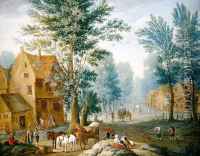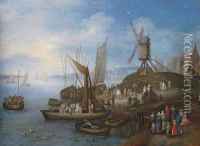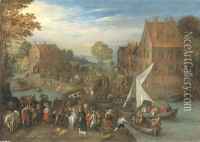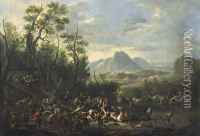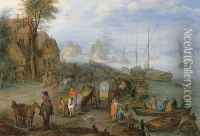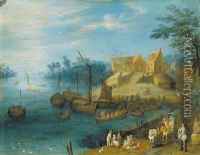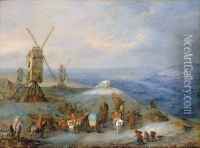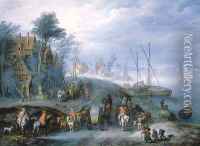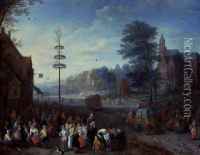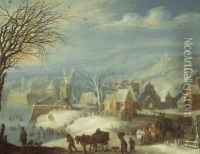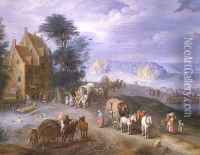Joseph van Bredael Paintings
Joseph van Bredael was a Flemish painter born into a family with a strong artistic heritage in Antwerp, Belgium, in 1688. He was part of the Bredael family of painters, which included his father Peeter van Bredael and his uncle Jan Peeter van Bredael the Elder, both of whom were well-known in their time for genre and landscape paintings. Joseph was known for his landscape and genre scenes, often imbued with a pastoral or idyllic quality, reflecting the influence of his family and his time.
Joseph's artistic training began within his family, under the guidance of his father and possibly his uncle. His early works show a strong resemblance to his relatives' style, characterized by a keen attention to detail and a vibrant color palette. He became a master in the Guild of Saint Luke, Antwerp, at a young age, which was typical for artists of his era and indicative of his skill.
His oeuvre includes a variety of subjects from scenic landscapes to battle scenes, and he was particularly adept at incorporating human figures into his landscapes, a trait that garnered him praise and attention from patrons. He often painted on copper, a medium that allowed for fine, delicate brushwork and a luminous quality to the paint, which was well-suited to his detailed and atmospheric compositions.
Joseph spent some time in Paris, where he was influenced by the works of French artists and the grandeur of the French landscape tradition. Despite this influence, he retained a distinctively Flemish sensibility in his work, combining the grandiose with a certain homely charm that was appreciated by his contemporaries.
Joseph van Bredael passed away in his hometown of Antwerp in 1739. His works continued to be appreciated for their craftsmanship and beauty, and today, they can be found in various art collections and museums. They serve as a testament to the enduring legacy of the Bredael family in the Baroque art history of Flanders.
